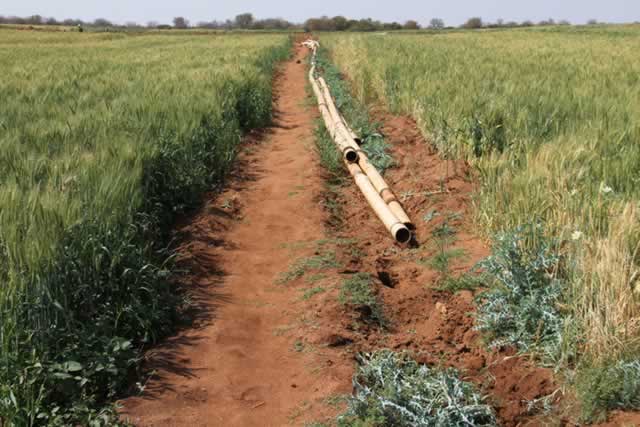
The Sunday Mail

Faith Mhandu
As the winter wheat season fast approaches, most commercial farmers are scratching their heads as they ponder the prospects of winter cropping.
Although farmers have a wide variety of winter crops to choose from, wheat has been the major crop since the 1960s.
Wheat production has, however, declined over the years, mainly due to a lack of funding. Current indications are that winter wheat production will be low this season and the future of the crop looks bleak. Chances are high that this winter, some farmers might consider horticultural crops instead.
Agronomist Mr Peter Gambara said there is no way winter wheat production would increase since there is virtually no funding.
“The major challenge facing wheat producers is that of funding. Farmers cannot fund themselves since they are yet to get paid for their summer crops which they are still harvesting,” said Mr Gambara.
“The last date of planting irrigated wheat is May 15 and, by that time, maize and soya bean farmers will still be harvesting their crop. This means they won’t have the cash to buy the necessary inputs required for winter wheat cropping on time.”
As a result, farmers would require funding from either banks or the Government. Unfortunately, financial institutions require collateral while Government has clearly indicated that this year farmers should source their own funding. Banks have lost trust in farmers since most of them have failed to service previous loans.
Farmers, on the other hand, say the Grain Marketing Board owes them millions of dollars in unpaid maize deliveries. Zimbabwe Farmers’ Union second vice-president Mr Berean Mukwende said most farmers lost properties after they failed to service loans.
“It is now very difficult for farmers to secure loans on their own from banks since banks now have stringent measures that most farmers cannot cope with,” he said.
“If you want to consider facts, we are being sabotaged. Former white commercial farmers had access to loans which had low interest rates unlike what we are being offered. The white farmers were also given enough time before they could start repaying the loans.
“Former white commercial farmers were given subsidised inputs unlike now when the production costs are too high compared to other countries in the region. This makes local products more expensive than imports. It costs between $350 and $400 to produce a hectare of wheat excluding the cost of electricity, which makes it difficult for us to break even.”
With the challenges, wheat production is expected to continue declining.
Since 2000, the highest harvest was in 2006 when production reached a peak of 135 000 metric tonnes. In 2009, the country experienced the worst ever winter wheat season as it only managed to produce 12 000 metric tonnes and, since then, the highest yield that the farmers have managed in the last few years is last season’s harvest of only 25 000 metric tonnes.
The country targets about 450 000 metric tonnes each season and, therefore, imports of at least 200 000 metric tonnes are needed to supplement local production every season.
In past years, farmer organisations would by now have lined up activities for the winter season and would have secured partners to fund wheat production.
Normally, winter wheat preparations start as early as February, but this year nothing tangible has been arranged.
Only last week, farmers’ unions said they were finding it difficult to secure partners. On the other hand, the private sector is reluctant to fund wheat production since it costs around $400 to import a tonne of the cereal compared to $466 being demanded by local producers.
Zimbabwe Commercial Farmers’ Union president Mr Wonder Chabikwa said the cost of wheat production in the country was expensive due to irrigation costs as well as high electricity tariffs and high input costs.
“Due to power cuts that have characterised our country, the cost of irrigation is too high. Using diesel generators for irrigation is more expensive than relying on electricity. Also, the cost of electricity is still high for our farmers. The Government promised a 55 percent subsidy on electricity tariffs, but it is taking long to be implemented,” said Mr Chabikwa.
The history of wheat production dates back to the 1960s when the then Rhodesian government was placed under economic sanctions by Britain, the Commonwealth and the United Nations after a Unilateral Declaration of Independence in 1965.
Prior to this, the country relied on imports and after the imposition of the economic sanctions, it was no longer sustainable to import wheat hence the decision by the Rhodesian government to resort to local wheat production.
Since the Zimbabwean economy is still on a recovery path, reducing imports would be another way of easing the pressure on Treasury.




